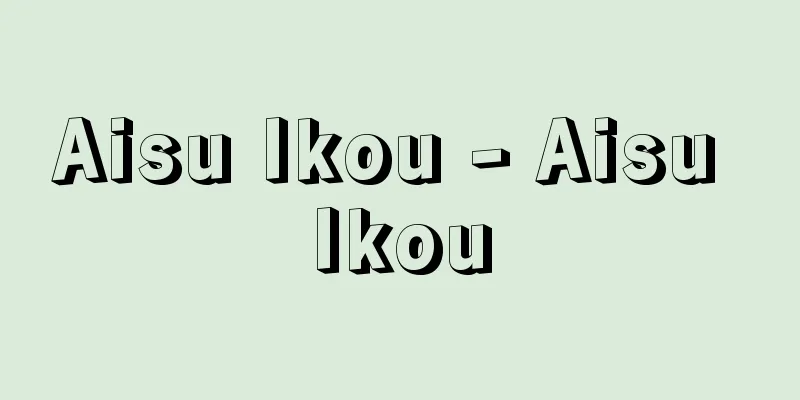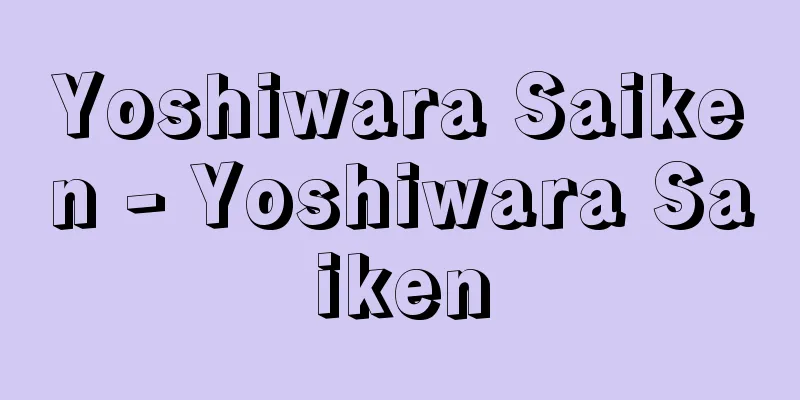Chusonji Temple

|
Located in Hiraizumi, Nishiiwai-gun, Iwate Prefecture, this is the northeastern head temple of the Tendai sect. It is called Kanzan, and the temple, pagoda and monks' quarters on the mountain are collectively called Chusonji. The principal image of the temple is Amida Nyorai. Founded by Jikaku Daishi Ennin in 850 (Kasho 3), it was originally called Kodaijuin, but in 859 (Jogan 1) it was renamed to its current name by imperial decree of Emperor Seiwa. In 1105 (Choji 2), Fujiwara no Kiyohira rebuilt the temple under the imperial command of Emperor Horikawa. Over the course of 21 years, he built Daichojuin, the main hall, three three-story pagodas, a bell tower, a sutra repository, an Amida hall, a large gate, and other structures, and in 1126 (Taiji 1), a grand ceremony was held to celebrate its completion. The prayer that was written there still remains to this day, and it describes Kiyohira's intention to hold a memorial service for the war dead and to build a Buddhist land in Oshu, after he was appointed as Mutsu Oshi for his military achievements in the Battles of Zenkunen and Gosannen. At that time, Chusonji became a place of imperial prayer for both Emperors Horikawa and Toba, and Keigen was appointed as the chief priest. Kiyohira's son Motohira and grandson Hidehira followed in his footsteps and built Motsu-ji Temple, Kanjizaio-in Temple, Muryoko-in Temple, and other temples, with the number of temple buildings totaling over 40 and over 300, and the Hiraizumi culture was magnificently built up by three generations of the Fujiwara clan. However, in 1189 (Bun'ei 5), the fourth head of the Fujiwara clan, Yasuhira, was killed by Minamoto no Yoritomo, and the Fujiwara clan was destroyed. Although the temple was preserved, repaired, and protected by Yoritomo, it was destroyed in a fire in 1337 (Engen 2, Kenmu 4), leaving only the Konjikido Hall (national treasure) and parts of the sutra repository (national important cultural property). The Golden Hall was protected by a covering hall that was built in 1288 (Shoo 1) by the order of the Kamakura Shogun Prince Koreyasu and the regent Hojo Sadatoki. During the Tensho era (1573-1592), Toyotomi Hideyoshi donated seven villages to the temple's land, and during the Edo period, the Date clan rebuilt and repaired the various buildings. In 1665 (Kanbun 5), the temple became a direct subordinate of Toeizan Rinnoji Temple, and in 1676 (Enpo 4), Prince Rinnoji issued a law, and after the Meiji Restoration, it became a direct subordinate of Mount Hiei. Currently, within the mountain are the Golden Hall, the sutra storehouse, the Benkei Hall, the main temple, the bell tower, the founder's hall, and the guardian shrine, Hakusansha, and the temple grounds have been designated a special historic site. The Konjikido is an Amida-do style hall built in 1124 (Tenji 1) by Kiyohira as his own funeral hall, without sparing any financial means. It is also known as the Hikari-do. It later became the mausoleum of Motohira and Hidehira. The inner sanctuary contains three altars containing the remains of three generations of the Fujiwara clan, and on each altar are placed eleven Buddha statues (National Important Cultural Properties) with Amida Nyorai as the principal image. The altars, pillars, ceilings, and fittings are inlaid with gold, silver, mother-of-pearl, and gemstones, and are said to be the pinnacle of art and craftsmanship from the end of the Heian period. The hall was dismantled and repaired over a period of six years starting in 1962 (Showa 37), when the old covering hall (National Important Cultural Property) was moved to another location and a new covering hall made of reinforced concrete was built. The temple has a great number of treasures, including the peacock-patterned chimes and chimes stand, wooden canopy, gilt bronze garland, mother-of-pearl octagonal altar in the inner sanctuary of the sutra storehouse, and the complete set of sutras in gold letters on indigo blue paper (2,739 volumes), all of which are designated as national treasures. In addition, the Golden Light King Sutra Gold-Lettered Treasure Tower Mandala, Paper Ink Writing of Offerings, and Wooden One-Character Golden Wheel Statue (all of which are National Important Cultural Properties) are stored in the Sankozo (Treasure House), along with many other Buddhist statues and Buddhist implements. Over 3,000 cultural properties and artworks from the 17 temples within the temple are also stored. [Nakayama Kiyota] "The Great Mirror of Chusonji Temple, by Ishida Shigesaku, 3 volumes (1941, Otsuka Kogeisha)" ▽ "Chusonji Temple, supervised by Fujishima Haijiro (1971, Kawade Shobo Shinsha)" ▽ "Chusonji Temple and the Four Generations of Fujiwara: Academic Research Report on Chusonji Temple" (1950, Asahi Shimbun) Source: Shogakukan Encyclopedia Nipponica About Encyclopedia Nipponica Information | Legend |
|
岩手県西磐井(にしいわい)郡平泉(ひらいずみ)町平泉に所在する天台宗東北大本山。関山(かんざん)と号し、山内の寺塔僧房を総称して中尊寺という。本尊は阿弥陀如来(あみだにょらい)。850年(嘉祥3)慈覚(じかく)大師円仁(えんにん)が開創、初めは弘台寿院(こうだいじゅいん)と称したが、859年(貞観1)清和(せいわ)天皇勅命によって現寺号に改められた。1105年(長治2)藤原清衡(ふじわらのきよひら)が堀河(ほりかわ)天皇の勅命を受けて再興、21年間にわたって大長寿院、金堂、三重塔3基、鐘楼、経蔵、阿弥陀堂、大門などを建立、1126年(大治1)には盛大な落慶供養が行われた。その発願文(ほつがんもん)はいまも残されており、前九年・後三年の役の戦功で陸奥押領使(むつおうりょうし)に任ぜられた清衡が、戦没者を供養し、奥州に仏国土建設を図った趣意が記されている。このときに中尊寺は堀河、鳥羽(とば)両天皇の勅願所となり、慶源が別当に任ぜられた。 清衡の子基衡(もとひら)、孫秀衡(ひでひら)も後を継いで毛越寺(もうつうじ)、観自在王院(かんじざいおういん)、無量光院(むりょうこういん)などを建立、堂塔40余、僧房300余を数えるに至り、藤原三代によって平泉文化が華麗に築かれていった。しかし1189年(文治5)4代泰衡(やすひら)が源頼朝(よりとも)に討たれて藤原氏は滅亡、寺は頼朝によって保護修理され守られたが、1337年(延元2・建武4)の火災で金色(こんじき)堂(国宝)、経蔵(国重要文化財)の一部を残して焼失した。金色堂は1288年(正応1)鎌倉将軍惟康(これやす)親王が執権北条貞時(ほうじょうさだとき)に命じて建立させた覆堂(さやどう)によって守られた。天正(てんしょう)年間(1573~1592)に豊臣(とよとみ)秀吉が寺領に7か村を寄付、さらに江戸時代には伊達(だて)氏が諸堂舎を再建修理した。1665年(寛文5)には東叡(とうえい)山輪王寺(りんのうじ)の直末(じきまつ)となり、1676年(延宝4)輪王寺宮により法度(はっと)を下され、維新後は比叡山直末となる。現在、山内に金色堂、経蔵のほか、弁慶堂、本坊、鐘楼、開山堂、鎮守社白山社などが点在し、境内は特別史跡に指定されている。 金色堂は1124年(天治1)清衡が自らの葬堂として財力を惜しまずに建てた阿弥陀堂形式の堂で、一名光堂(ひかりどう)とよばれる。のち基衡、秀衡の廟所(びょうしょ)ともなった。内陣には藤原氏三代の遺体を納めた三つの須弥壇(しゅみだん)があり、各壇上にはそれぞれ阿弥陀如来を本尊とする11体の仏像(国重要文化財)が安置されている。須弥壇、柱、天井、組物などには金銀、螺鈿(らでん)、珠玉がちりばめられ、平安末期の美術工芸の極致といわれる。なお1962年(昭和37)から6年にわたって解体修理が行われ、旧覆堂(国重要文化財)を他に移し、新しく鉄筋コンクリート造の覆堂がつくられた。寺宝は非常に多く、金色堂堂内具の孔雀文磬(くじゃくもんけい)および磬架(けいか)、木造天蓋(てんがい)、金銅華鬘(けまん)などと、経蔵内陣の螺鈿八角須弥壇、紺紙金字一切経(こんしきんじいっさいきょう)(2739巻)などが国宝に指定。そのほか金光明最勝王経金字宝塔曼荼羅(こんこうみょうさいしょうおうきょうきんじほうとうまんだら)、紙本墨書供養願文、木造一字金輪(きんりん)像(以上国重要文化財)のほか多数の仏像、仏具など、山内17か院に伝わる文化財や美術品3000余点が讃衡蔵(さんこうぞう)(宝蔵)に収蔵保管されている。 [中山清田] 『石田茂作著『中尊寺大鏡』全3巻(1941・大塚巧芸社)』▽『藤島亥治郎監修『中尊寺』(1971・河出書房新社)』▽『『中尊寺と藤原四代――中尊寺学術調査報告』(1950・朝日新聞社)』 出典 小学館 日本大百科全書(ニッポニカ)日本大百科全書(ニッポニカ)について 情報 | 凡例 |
Recommend
Nuclear deterrence
The idea of nuclear deterrence is to communicate...
Maputo (English spelling)
The capital of Mozambique. Formerly called Lourenç...
Imari blue and white porcelain
...The early works are also considered to be in t...
Kaoru - Kunzuru
[1] (Independent verb) Kun/Zu (Independent verb) ①...
Euridice
...As a result, opera was born, and solo singing ...
Clematis florida (English spelling) Clematisflorida
…[Yutarou Nishibe]. … *Some of the terminology th...
Mr. Takagi
(1) A medieval samurai family whose main residence...
Princess Abe
...The 43rd empress of the early Nara period. Rei...
Yoshiaki Kasagi
1892-1955 A nationalist from the Taisho to Showa ...
Ensai - Ensai
Year of death: Gangyo 1 (877) Year of birth: unkno...
Hamath (English spelling)
The ruins of an ancient city in northern Syria. It...
Kim Yu-shin
A Silla general who contributed to the unificatio...
Teaching and research meeting - Teaching and research meeting
Abbreviation for National Conference on Educationa...
Papaya
Nutrition and Function Papaya is a herbaceous shr...
Scientific Investigation Laboratory
One of the affiliated organizations of each prefec...









